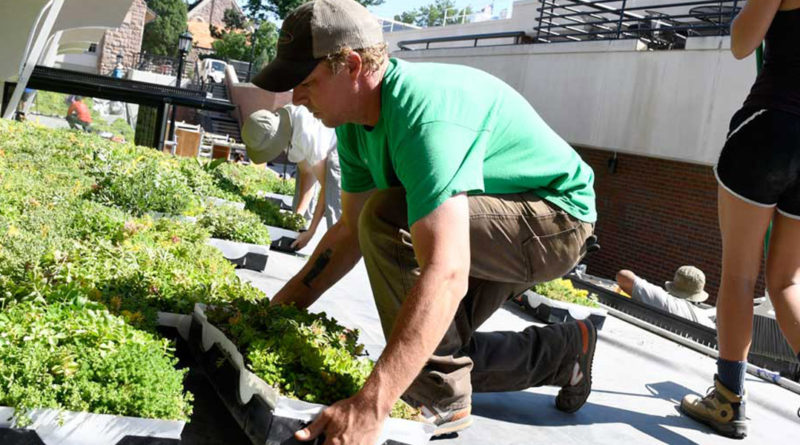Green Roofs Add Color to Cities Nationwide
In urban areas, green space can be hard to find. That’s why designers are creating green roofs on top of commercial buildings. These living roofs have been used on top of hospitals, schools, restaurants and office spaces to add beauty while reducing energy-related costs.
According to New York City-based 100 Resilient Cities, green roofs have become a major trend in energy-efficient buildings because they extend the lifespan of a facility and its appliances while reducing operational and maintenance costs. Below are two recent projects that incorporate green roof strategies:
1. Amazon’s Seattle Tower is currently undergoing a construction project that will build a new headquarters complete with a green roofing system that captures stormwater, conserves energy and prevents potential flooding. The tower will be complete this September and will feature a multi-story, glass enclosed dome covered in plants native to Oregon and to the rest of the world. A groundbreaking ceremony took place earlier this year with Seattle-based NBBJ as the designer and Seattle-based Sellen Construction as the general contractor. Columbia Green Technologies designed the roofing system but could not be reached to reveal the cost of the project.
“Green roofing has grown tremendously in the last few years because building owners are realizing the benefits of utilizing green roofs on empty space,” said Columbia Green CEO Vanessa Keitges in a statement.
2. Colorado College (CC) in Colorado Springs, Colo., just completed the installation of a 2,650-square-foot green roof on top of the Honnen Ice Arena. The roof is designed to lower the building’s temperature during summer months and warm the building in the winter. It also teaches students how to implement sustainable features in large-scale designs.
“We’re looking at using natural systems, or biomimicry, to solve problems,” Ian Johnson, CC’s director of sustainability said in a statement. “It’s a natural solution for the climate control of the building.”
Construction on the project broke ground early 2016 and the rooftop garden was officially completed on Aug. 4, 2016 after students finished adding 13,000 sedums. About 20 students and 15 employees participated in the construction and installation of the rooftop garden under the supervision of the Josh Ortiz, CC’s landscape and grounds supervisor. The project cost $200,000 and two more rooftop gardens are set for installation in 2017 at the Tutt Library and another at the new East Campus Housing Project. Whitehall, Mont.-based Intermountain Roofscape Supply grew the plants so they could be maintained in Colorado Springs’ climate.
Green rooftops have been known to improve air quality by reducing carbon dioxide and producing oxygen instead. They also reduce the heat-island effect, or the trend that causes urban areas to be warmer than less populated ones. The heat-island effect is the main cause of ozone depletion and the transmission of harmful UV rays, according to the Environmental Protection Agency (EPA).
By designing more green rooftops, commercial buildings can create energy-efficient spaces designed to lower costs and extend the life of building features. They can also improve the health of those who occupy while adding some greenery to an urban jungle.

